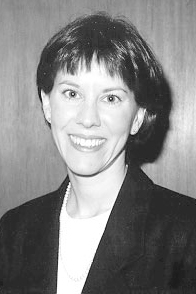NIH Award from the National Institute of Neurological Disorders and Stroke
Myoferlin in Muscle Membrane Fusion and Repair
- Principal Investigator: Elizabeth McNally, MD, PhD, Professor of Medicine and Human Genetics; Director, Institute for Cardiovascular Research; Director, Cardiovascular Genetics Clinic
- Start Date: September 30, 2009
- Total Award Amount: $390,000 (first year); $390,000 (second year)
Public Health Relevance
Ferlin proteins are important for muscle growth and repair. Mutations in dysferlin cause inherited muscular dystrophy, a devastating progressive muscle disorders that causes the loss of walking and breathing. Myoferlin, is highly related to dysferlin, and is important for normal muscle growth. We are studying the role of ferlin proteins to devise therapy to improve muscle growth in the muscular dystrophies.
Project Description
Muscle degeneration underlies many forms of muscular dystrophy and may also contribute significantly to the decline of muscle mass associated with the normal aging process. Limb Girdle Muscular Dystrophy 2B is a recessive form of muscular dystrophy that is due to mutations in the dysferlin gene. Dysferlin is member of the ferlin family. In muscle, two different ferlin proteins are known to mediate membrane fusion events. Muscle growth arises because myoblasts fuse to each other as well as to the multinucleate syncytial myofiber. In addition, upon membrane damage, fusion of intracellular vesicles to the plasma membrane facilitates the rapid resealing of membrane disruption. Dysferlin is more abundantly expressed in mature myofibers, and muscle lacking dysferlin displays ineffective membrane sealing of laser-induced membrane disruption. Myoferlin is highly expressed in myoblasts undergoing fusion to myotubes, and myoferlin null myoblasts fuse less effectively forming smaller myotubes in vivo and in vitro.
Both dysferlin and myoferlin have at least six C2 domains, and these domains regulate membrane fusion in other C2-domain containing proteins. The first C2 domains of both dysferlin and myoferlin bind to negatively charged phospholipids only in the presence of calcium. These data reinforce the role of ferlin proteins as scaffolds for assembling and mediating the fusion events important for muscle growth and repair. Insulin-like growth factor (IGF) 1 is a compound known to stimulate muscle growth, and we now found that myoferlin cells are unresponsive IGF1. Additionally, we found that IGF receptors do not translocate normally in myoferlin null myoblasts. In a separate line of experiments, we found that the second C2 domain of myoferlin binds directly to EHD2; EHD proteins have been implicated in endocytic recycling, a process where internalized vesicular components fuse to the plasma membrane to return cargo to the plasma membrane.
We propose a broad role for ferlin proteins in vesicle trafficking that includes endocytosis and recycling defects. This vesicle traffic is critical for normal myoblast fusion and muscle growth and repair. Aim 1 will examine the role ferlin proteins, specifically myoferlin, in receptor trafficking and signaling. Aim 2 will identify and study proteins associated with endocytic recycling to determine their role in myoblast fusion and muscle growth. Understanding this pathway will guide the design of new therapies to promote muscle growth and repair in disease and aging.
This award is funded under the American Recovery and Reinvestment Act of 2009, NIH Award number: 2R01NS047726-05A2

Elizabeth McNally, MD, PhD,
Professor of Medicine and Human Genetics; Director, Institute for Cardiovascular Research; Director, Cardiovascular Genetics Clinic
